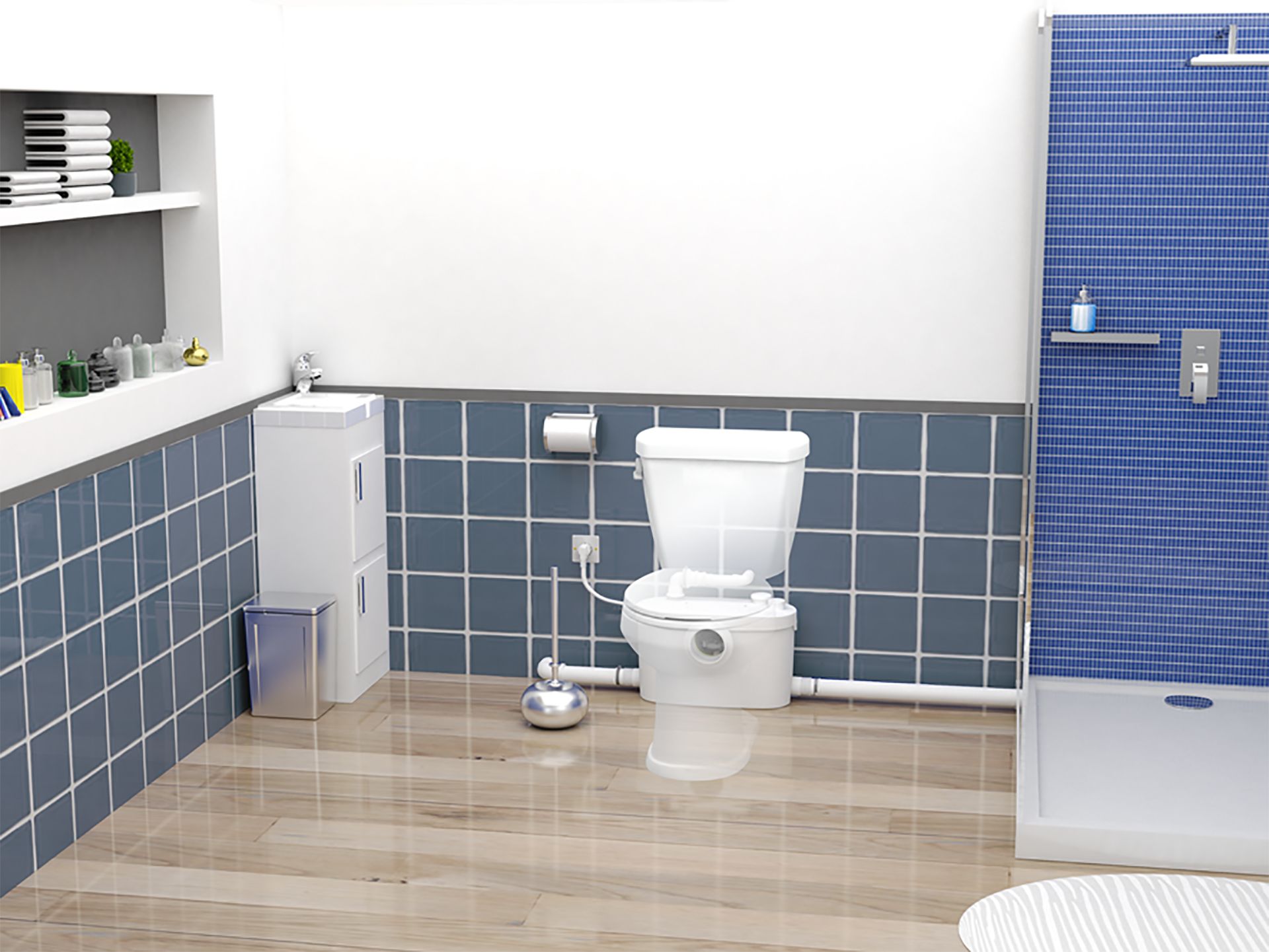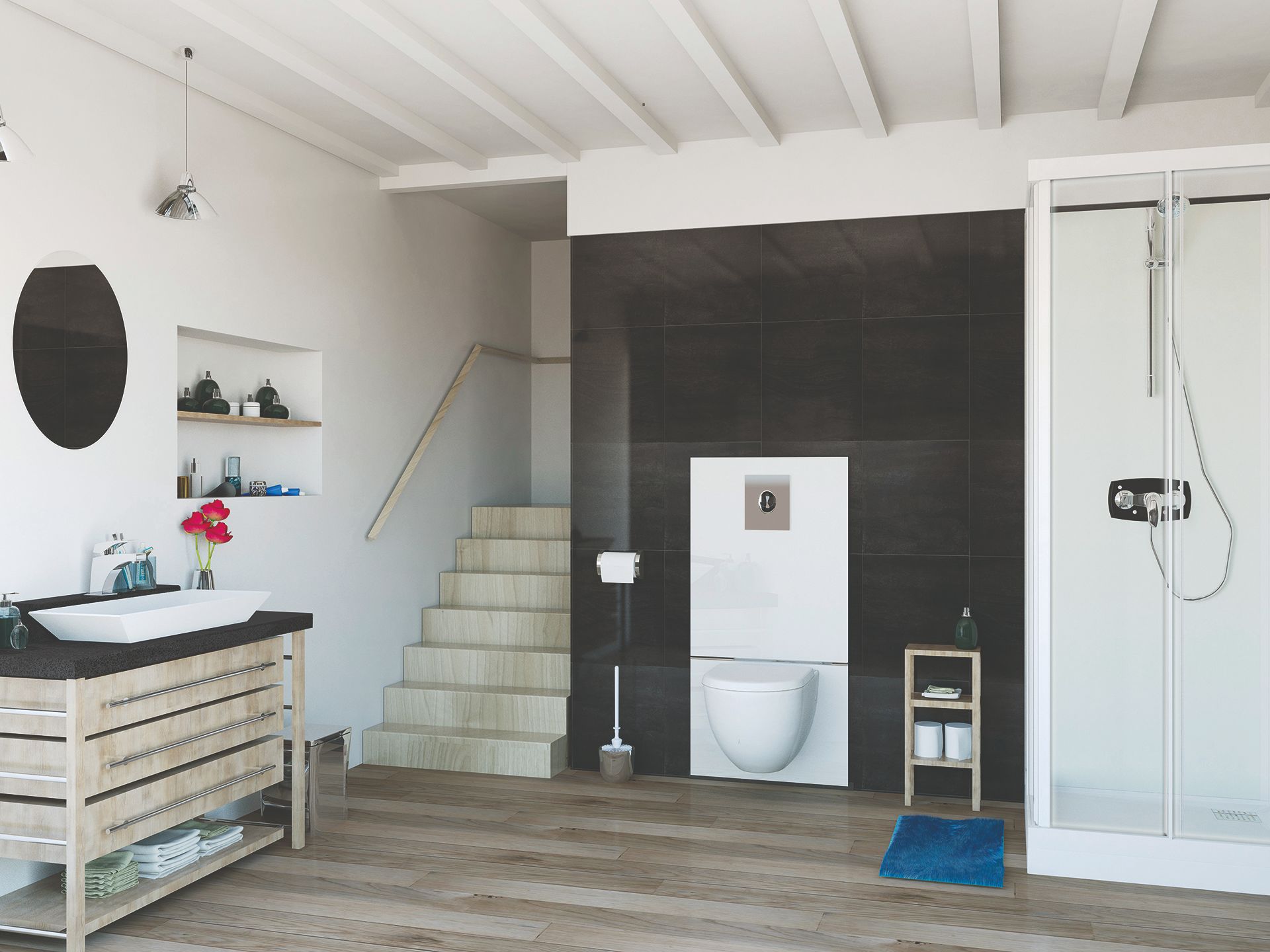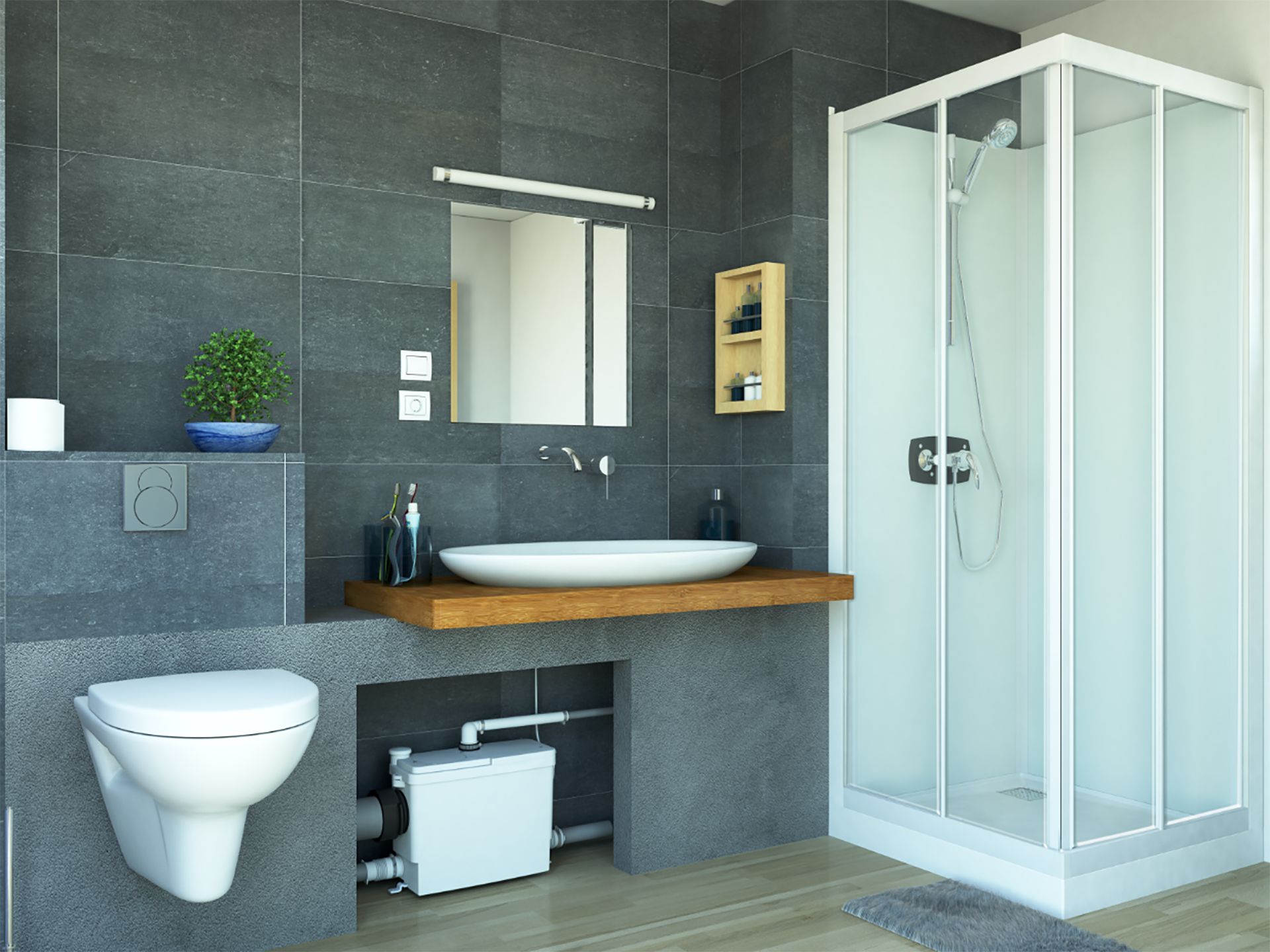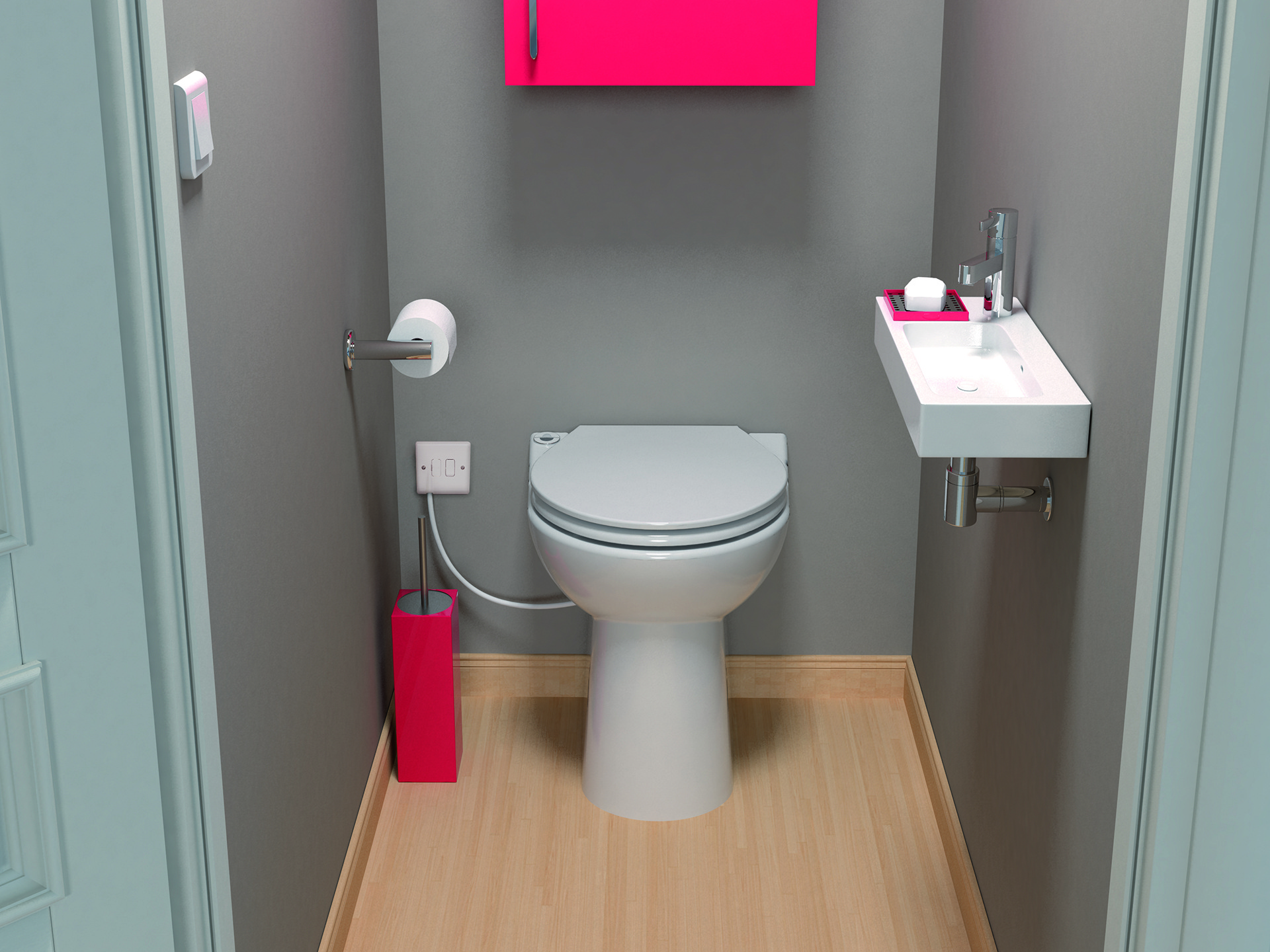What is a macerator toilet and why use one?
Read on to find out all about macerators and how they could help you install toilets in tricky places
A macerator lets you install a toilet in a place in your home where there isn’t any suitable plumbing to connect an ordinary toilet. So, it could be the key to letting you put a en suite in a far corner of the house or that loo for the kids in the basement. Here’s what you need to know about macerators.
Ordinary toilets
Regular toilets need to be positioned close to your home’s main soil and vent stack (the vertical downpipe through which waste leaves the house into the sewer): within 6m according to building regs.
The (relatively wide) waste pipes from most toilets rely on gravity and a gentle slope (fall or drop) to carry the flushed waste down into the main soil stack and away into the sewer or septic tank. That’s just not going to work if you want a toilet a long distance from the main soil stack, or you need a toilet where waste would have to flow upwards, such as in a basement. You could add a second soil stack, but that depends on there being a sewer to connect it to. If that isn’t an option or is too expensive, that’s where macerators come in.
Why use a macerator?
A macerator lets you site a toilet a long way from your home’s soil stack, or in a place where you don’t have the necessary ‘fall’ to connect to the soil stack in the usual way (for example, in a basement where the toilet is below the point where your soil stack enters the sewer system).
The power provided by the macerator pump allows waste from the toilet to be pumped a long way: how far will be specified on each toilet’s datasheet. It might be 100m horizontally, for example, and 5m vertically.
How does it work?
A macerator contains a motor that runs a shredder and a pump when the flush is pushed. The shredder blades chop up the waste and mix it with water to form a liquid, and the pump pumps that liquid away. Because of the pressure provided by the pump and the fact the waste has been chopped up, this liquid can be pumped through narrower pipes (about 3cm, much narrower than standard toilet waste pipes) for quite a distance before reaching the soil stack and being discharged into the sewer.
Integrated or separate

Image credit: Saniflo Saniflo XR Up macerator unit
You can buy a macerator toilet with an integral macerator that sits between the toilet and the wall (see picture at the top of the page). These are often compact and work well in small spaces. Alternatively, you can buy a separate macerator unit and attach it to a regular toilet (see above).
Nowadays you can even buy macerators with wall frames, like the Sanifo Saniwall Pro UP (below), designed to work with a wall-hung toilet, and ones made to go behind wall panels for use with a back-to-wall or wall-hung toilet (see the Saniflo Sanipack Pro UP shown further down the page).

Image credit: Saniflo Saniwall Pro UP
Installation
Installing a macerator toilet can be a DIY job, but it’s one you want to get right because no one wants a blocked macerator. You will need to work out where all the pipework to and from the soil stack is going to go and may need to box some of it in. So, it might be a job for a plumber, after all. A macerator also needs an electrical supply to work.
Are macerators noisy?
Anecdotally, macerators can be noisy. However, the newest generation of products are made to be quieter than older models. Just make sure you follow the installation instructions to the letter.
Full shower room
Many macerators can be connected up to take away the waste water from a sink too, which means you can install a hand basin alongside the toilet in your hard-to-plumb location. Lots of them can even cope with the waste water from a shower as well. So you can create a whole shower room.

Image credit: Saniflo Sanipack Pro UP
Maintenance
It is really important you don’t put anything other than waste and toilet paper down a macerator toilet. Otherwise, you will block it. (More robust units containing grinders are available for situations such as holiday lets, where you have less control over what people put down the toilet.)
You should clean a macerator toilet regularly with special cleaning products designed for macerators rather than standard toilet cleaners, which can damage them. It’s particularly important to use purpose-made macerator descaler if you live in a hard-water area.









